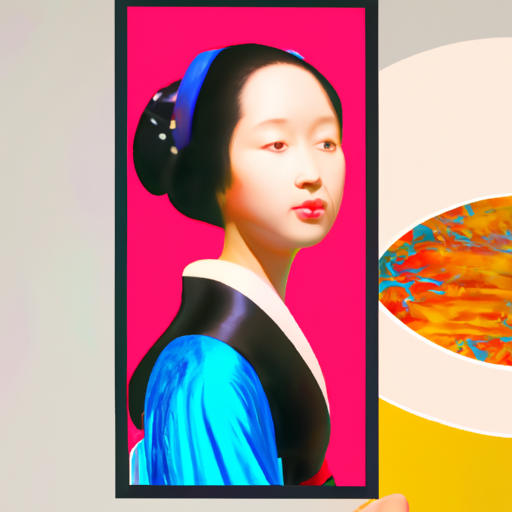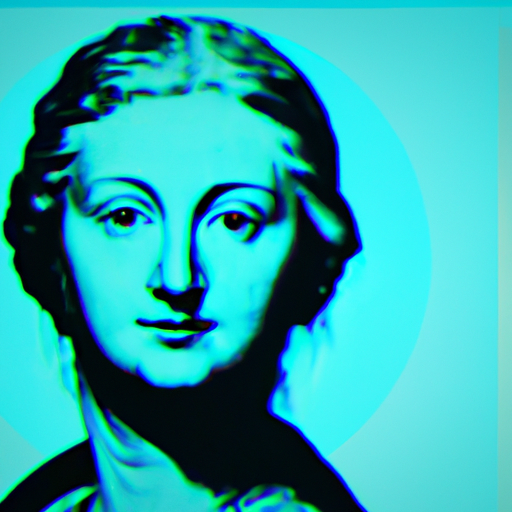
-
Table of Contents
The Influence of Ancient Art in Contemporary Graphic Design

Ancient art has always been a source of inspiration for artists throughout history. From the intricate designs of Egyptian hieroglyphics to the bold and vibrant colors of Greek pottery, ancient art has left an indelible mark on the world of creativity. In recent years, this influence has extended to the realm of graphic design, with contemporary designers drawing inspiration from the techniques, motifs, and aesthetics of ancient art. This article explores the ways in which ancient art has influenced contemporary graphic design, examining specific examples and case studies to illustrate the impact of this rich artistic heritage.
The Power of Symbolism
Ancient art is often characterized by its use of symbolism to convey meaning and tell stories. This emphasis on symbolism has found its way into contemporary graphic design, where designers use symbols to communicate complex ideas and evoke emotions. For example, the use of the eye symbol, which has its roots in ancient Egyptian art, has become a popular motif in modern graphic design. The eye symbolizes protection, knowledge, and enlightenment, and its use in contemporary designs adds depth and meaning to the visual composition.
Another example of the power of symbolism in contemporary graphic design is the use of animal motifs. Ancient civilizations often depicted animals in their artwork to represent various qualities and characteristics. This tradition has been carried forward into modern design, where animals are used as symbols to convey specific messages. For instance, a lion may be used to represent strength and courage, while a dove may symbolize peace and harmony. By incorporating these ancient symbols into their designs, contemporary graphic designers are able to tap into the rich cultural heritage of ancient art and create visually compelling and meaningful compositions.
The Influence of Ancient Techniques
Ancient art was created using a variety of techniques that have had a lasting impact on the world of graphic design. One such technique is the use of symmetry and balance. Ancient civilizations, such as the Greeks and Romans, placed great importance on achieving balance and harmony in their artwork. This emphasis on symmetry can be seen in contemporary graphic design, where designers strive to create visually balanced compositions that are pleasing to the eye.
Ancient art also made use of intricate patterns and repetitive motifs, which have become a staple in contemporary graphic design. For example, the use of geometric patterns, inspired by ancient Islamic art, has become increasingly popular in modern design. These patterns not only add visual interest to a composition but also create a sense of rhythm and movement.
Furthermore, the use of typography in ancient art has influenced contemporary graphic design. Ancient civilizations developed unique and stylized forms of writing, which have served as inspiration for modern typography. For instance, the angular and geometric forms of ancient Greek lettering have been adapted and incorporated into contemporary designs, adding a touch of elegance and sophistication.
Case Studies: Ancient Art in Contemporary Graphic Design
To further illustrate the influence of ancient art in contemporary graphic design, let’s examine a few case studies:
Case Study 1: The Nike Swoosh
The Nike swoosh logo, one of the most recognizable logos in the world, draws inspiration from the winged victory of Samothrace, an ancient Greek sculpture. The sculpture depicts Nike, the Greek goddess of victory, with her wings spread wide, capturing a moment of triumph and grace. The swoosh logo, with its curved and dynamic shape, evokes a similar sense of movement and victory, paying homage to the ancient artwork that inspired it.
Case Study 2: The Coca-Cola Bottle
The iconic shape of the Coca-Cola bottle was inspired by the ancient Roman amphora, a vessel used for storing and transporting liquids. The designers of the Coca-Cola bottle sought to create a distinctive and memorable shape that would stand out on store shelves. By drawing inspiration from ancient Roman art, they were able to create a timeless design that has become synonymous with the Coca-Cola brand.
The Future of Ancient Art in Graphic Design
The influence of ancient art in contemporary graphic design shows no signs of waning. As designers continue to seek inspiration from the past, we can expect to see more innovative and creative uses of ancient techniques, motifs, and aesthetics in the future. The rich cultural heritage of ancient art provides a wealth of inspiration for designers, allowing them to create visually compelling and meaningful compositions that resonate with audiences.
Conclusion
Ancient art has had a profound influence on contemporary graphic design. From the use of symbolism to the incorporation of ancient techniques, designers continue to draw inspiration from the rich artistic heritage of the past. By tapping into the power of ancient art, designers are able to create visually compelling and meaningful compositions that resonate with audiences. As we look to the future, it is clear that the influence of ancient art in graphic design will continue to shape and inspire the world of creativity.
